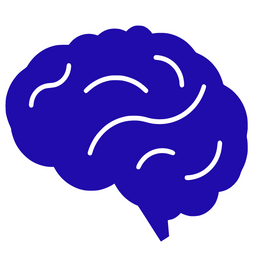Looking for Module 7 - Nature Of Light HSC Physics practice questions to test your knowledge before your exams? Here are 10 challenging questions for you to aid your studies.
Table Of Contents:
- Question 1
- Question 2
- Question 3
- Question 4
- Question 5
- Question 6
- Question 7
- Question 8
- Question 9
- Question 10
- Answer Key
Question 1
Which graph correctly shows the relationship between the surface temperature of a black body (T) and the wavelength (λ) at which the maximum intensity of light is emitted? (1 mark)
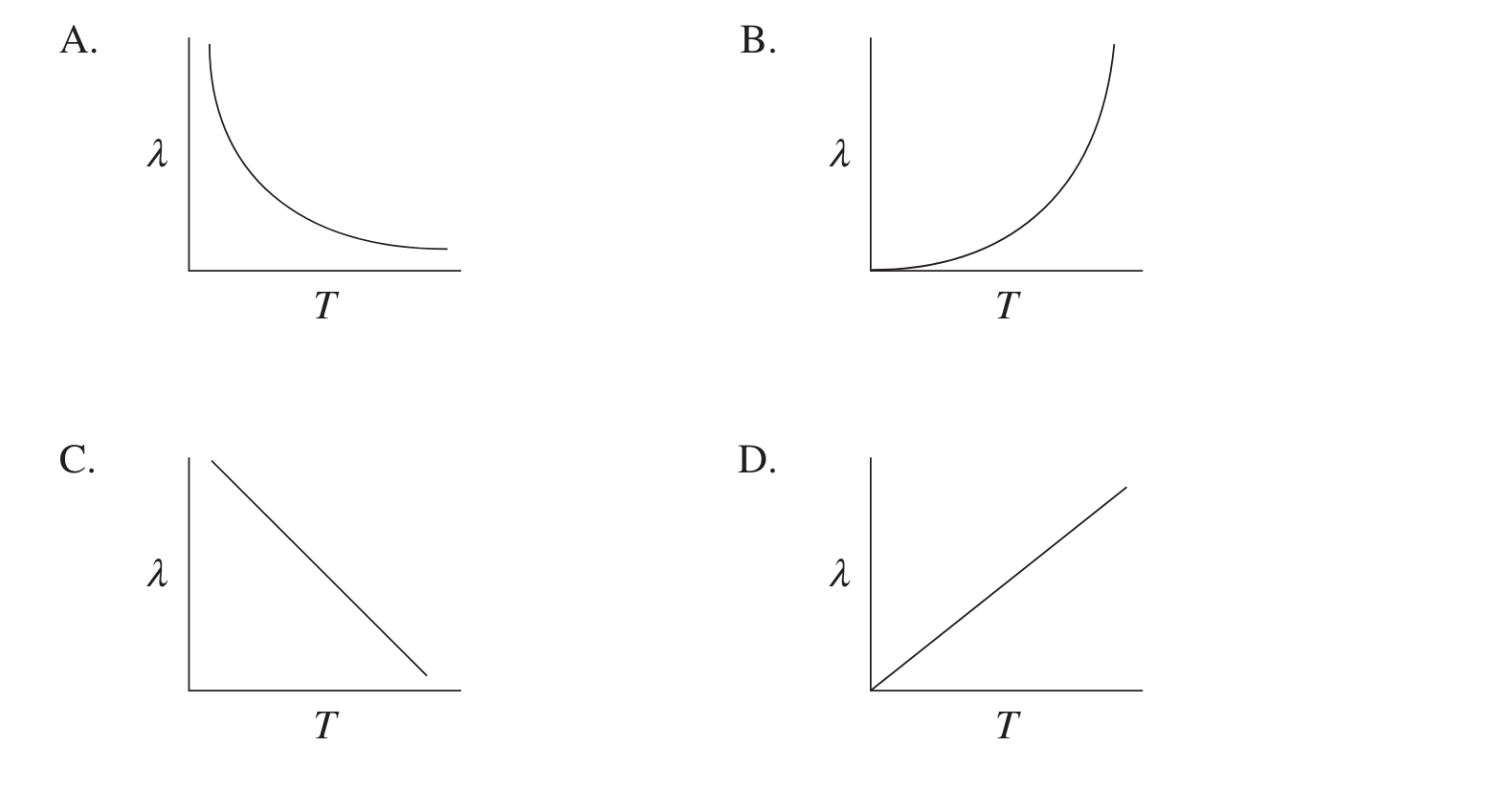
Question 2
The diagram shows a model of electromagnetic waves.

Relate this model to predictions made by Maxwell (4 marks)
Question 3
A capsule travelling at 12 900 m/s enters Earth’s atmosphere, causing it to rapidly slow down to 400 m/s.
(a) During this re-entry, the capsule reaches a temperature of 3200 K. What is the peak wavelength of the light emitted by the capsule? (2 marks)
(b) Outline TWO limitations of applying special relativity to the analysis of the motion of the capsule. (3 marks)
Question 4
The following apparatus is used to investigate light interference using a double slit.

The distance, y, from the slits to the screen can be varied. The adjustment screws (S) vary the distance, d, between the slits. The wavelength of the laser light can be varied across the visible spectrum. The diffraction pattern shown is for a specific wavelength of light.
Explain TWO methods of keeping the distance between the maxima at A and B constant when the wavelength of the laser light is reduced. (4 marks)
Question 5
Outline observations that Hertz made that were consistent with the photoelectric effect. In your answer, identify equipment that was essential for him to make these observations. (3 marks)
Question 6
Explain how the result of ONE investigation of the photoelectric effect changed the scientific understanding of the nature of light. (4 marks)
Question 7
The length of a spaceship is measured by an observer to be 3.57 m as the spaceship passes with a velocity of 0.7c. At what velocity would the spaceship be moving relative to the observer if its measured length was 2.5 m? (1 mark)
A. 0.490c
B. 0.707c
C. 0.714c
D. 0.866c
Question 8
Using examples from special relativity, explain how theories in science are validated in different ways. (5 marks)
Question 9
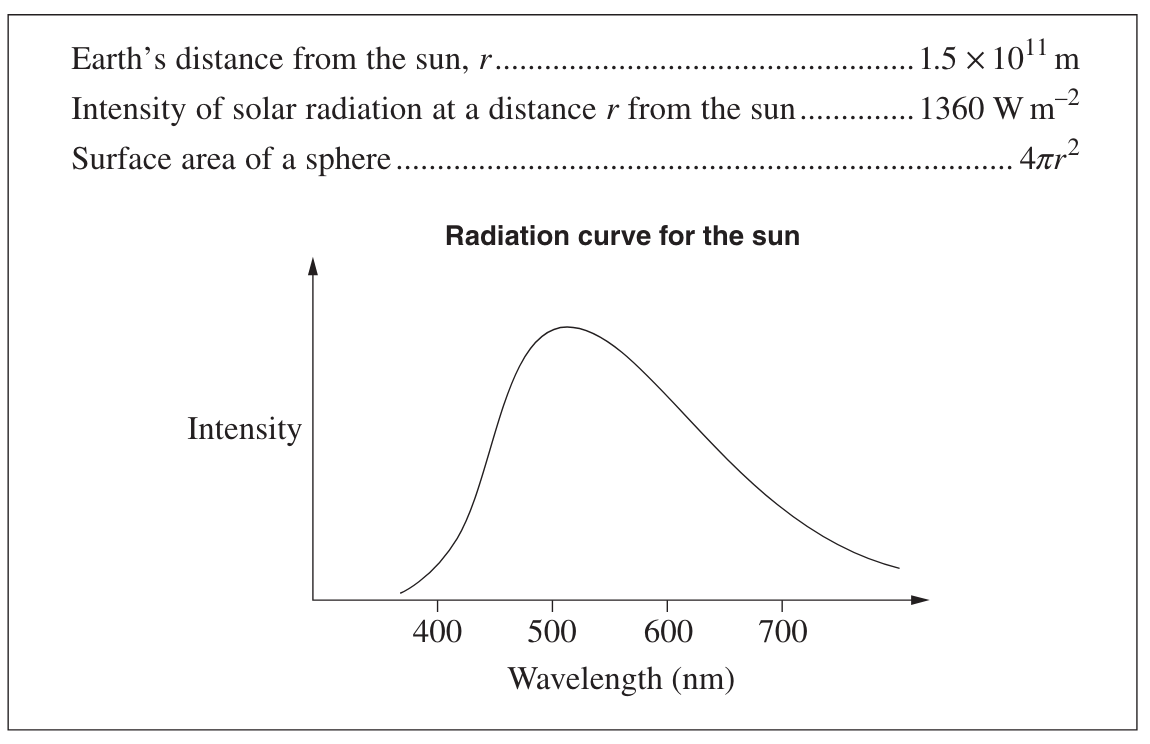
Describe both the production and radiation of energy by the sun. In your answer, include a quantitative analysis of both the power output and the surface temperature of the sun (9 marks)
Get direct advice from our HSC Physics Tutor Specialists who can help you with Equilibrium & Acid Reaction preparation and general exam strategy! 👇
Question 10
Two experiments are performed with identical light sources having a wavelength of 400 nm. In experiment A, the light is incident on a pair of narrow slits 5.0 × 10−5 m apart, producing a pattern on a screen located 3.0 m behind the slits.

In experiment B, the light is incident on different metal samples inside an evacuated tube as shown. The kinetic energy of any emitted photoelectrons can be measured.
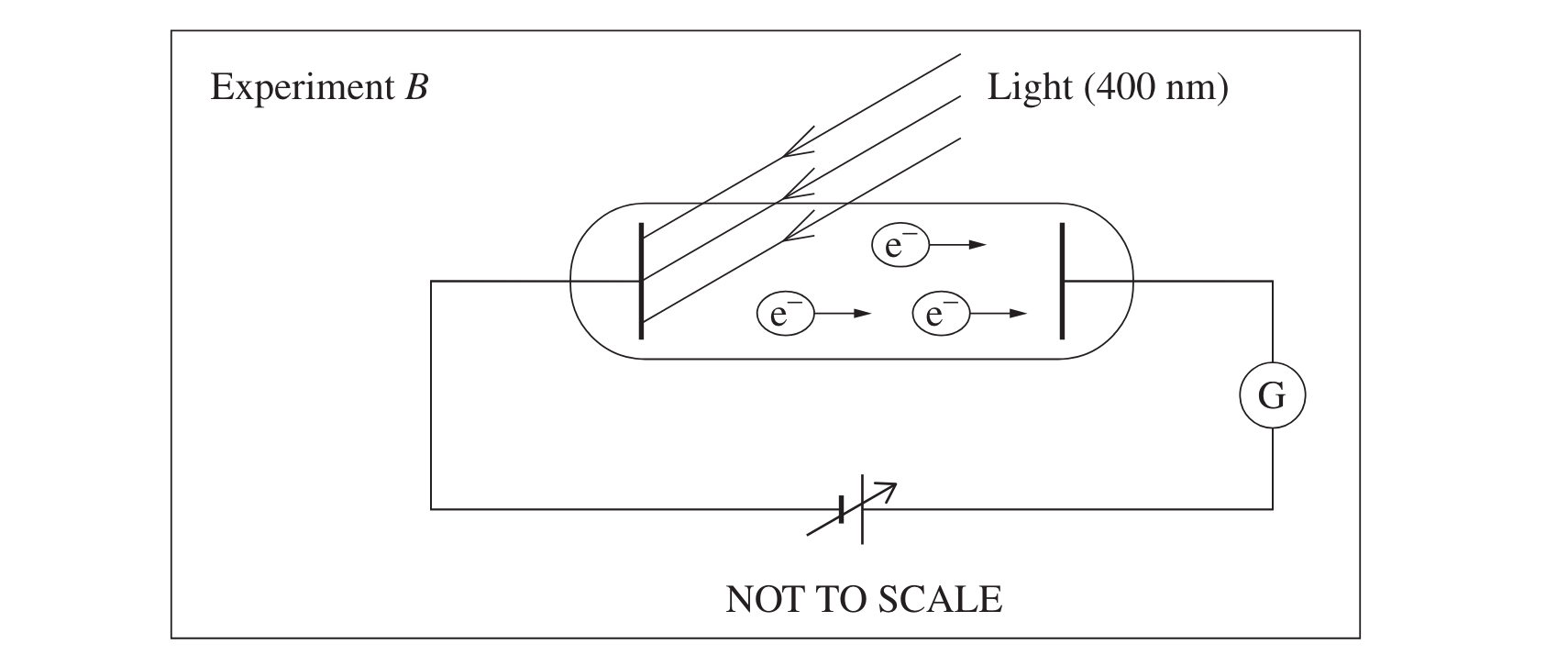
Some results from experiment B are shown.

How do the results from Experiment A and Experiment B support TWO different models of light? In your answer, include a quantitative analysis of each experiment. (9 marks)
Answer Key
Question 1. A
Question 2. The model shows alternating electric and magnetic fields perpendicular to each other. This is consistent with Maxwell’s prediction that a changing electric field produces a changing magnetic field and vice versa. The model shows a wave propagating at velocity v. Maxwell predicted the existence of a range of waves with different wavelengths, all travelling with the same speed.
Question 3.
a)

b) The speed of the capsule is not a significant fraction of the speed of light, hence the effects of special relativity are insignificant. The capsule is in a non-inertial frame because it is accelerating, and therefore special relativity is not applicable. This limits applying special relativity to the motion of the capsule.
Question 4. To keep the distance between A and B constant:
1. the slit separation d could be reduced causing θ to increase, compensating for the effect of reducing the wavelength.
2. the distance ‘y’ could be increased sinθ for any angle θ, the distance between A and B increases and ‘y’ increases and so increasing ‘y’ would compensate for the reduction in θ due to the shorter wavelength.
Question 5. Hertz observed that if a glass screen between the spark emitter and the receiving loop antenna was removed, the maximum length of the spark across the air gap of the loop antenna was increased.
Question 6. Before the explanation of the photoelectric effect, light was considered to consist of transverse waves of different wavelengths. One experimental result showed that the velocity of photoelectrons did not increase with increased light intensity, but did increase when the frequency of the light was increased. This was not consistent with predictions of the wave model and could only be explained by considering the light to consist of discrete packets of energy (quanta) where quanta of high frequency light possessed more energy than those of low frequency light.
Question 7. D
Question 8. A theory must be consistent with observations, be supported by valid experiments and be useful in making predictions. Time dilation has been observed in experiments using atomic clocks in aircraft in relation to synchronised clocks observed on the surface of the Earth. The results from such experiments can be used to predict the relativistic effects on sub-atomic particles travelling at high velocity in linear accelerators.
Question 9.
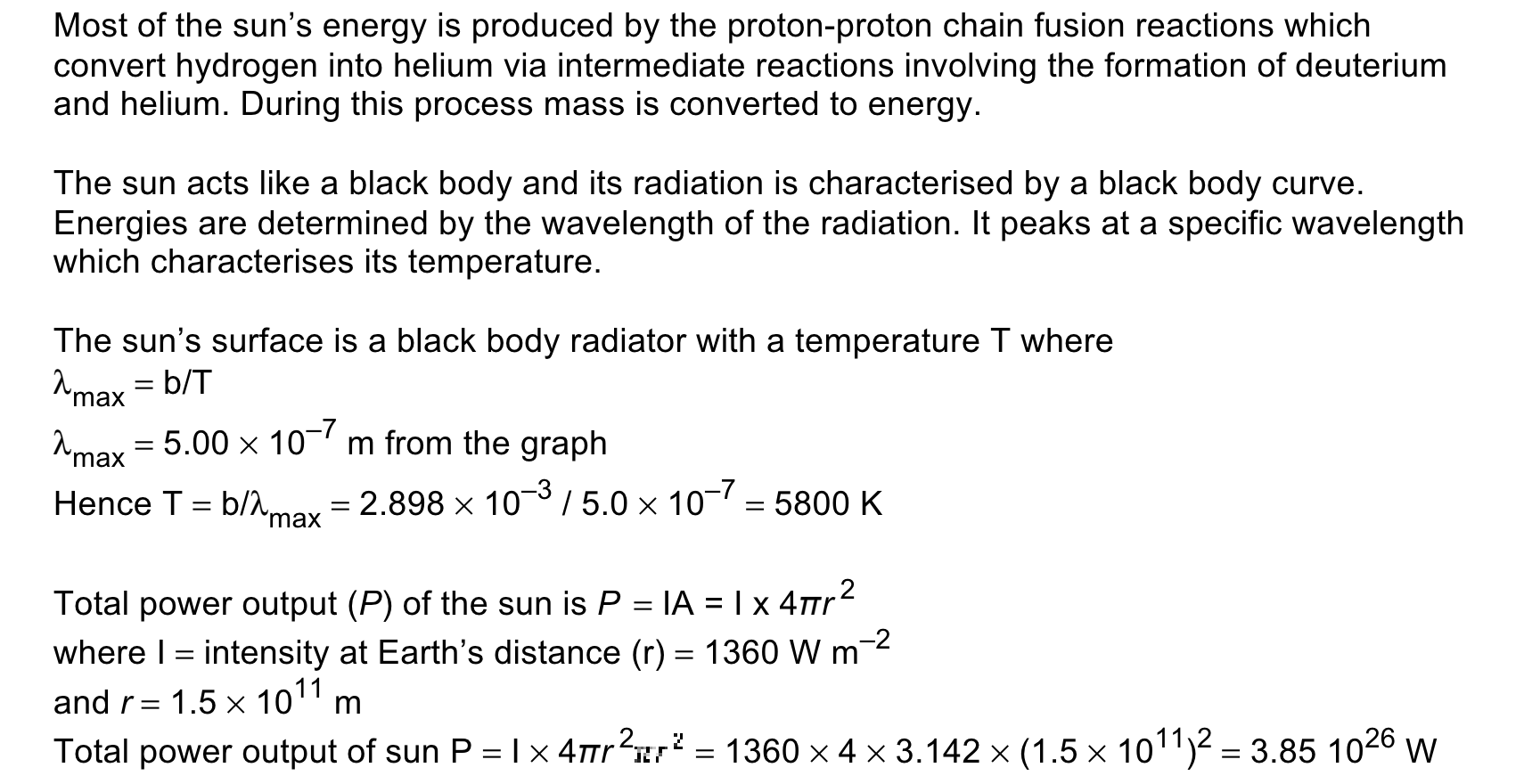
Question 10.
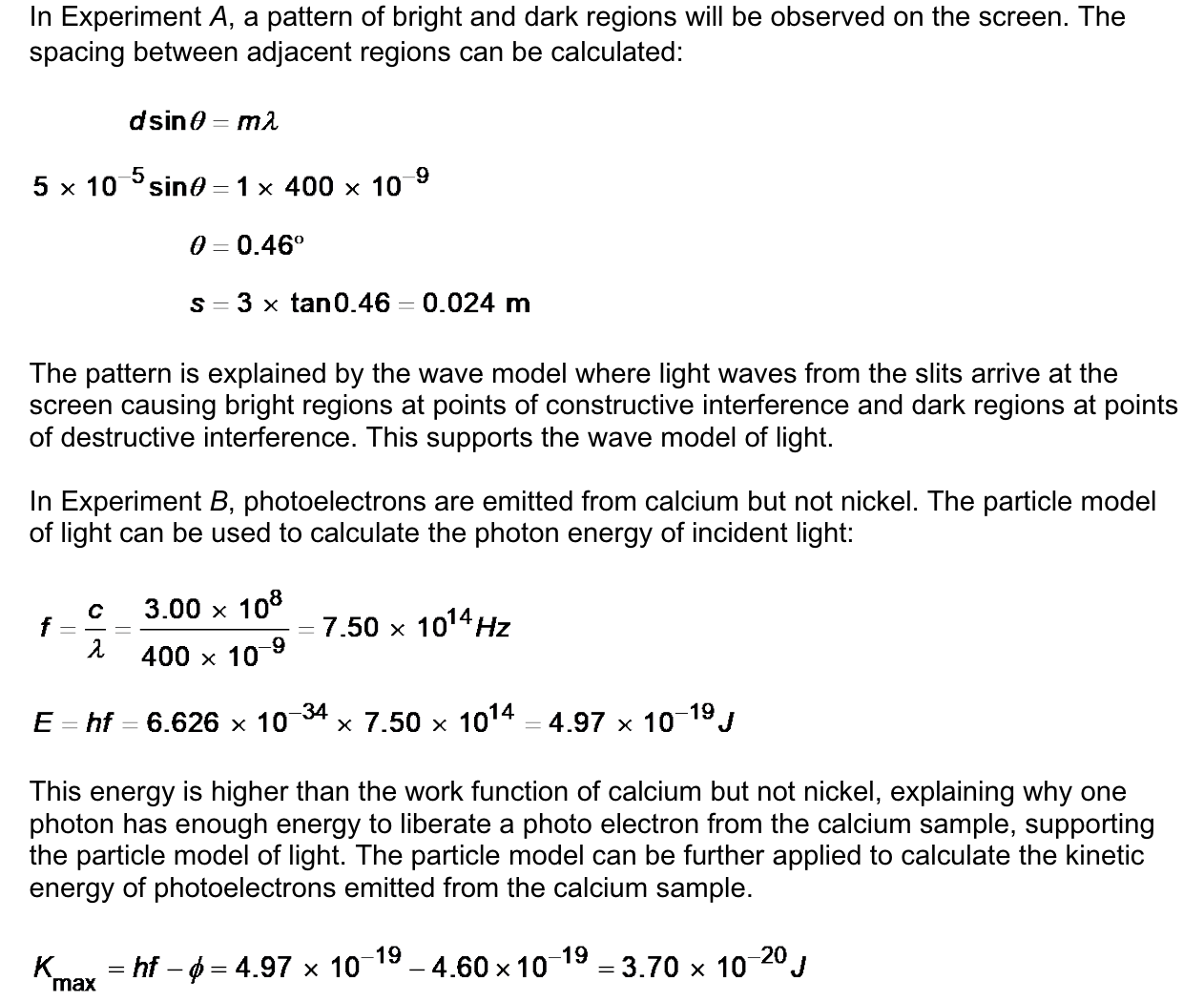
Want To Score A Band 6 In HSC Physics?
Get your first FREE Lesson with a HSC Physics Tutor Specialist and discover the power of KIS personalised tutoring.
Find A HSC Physics Specialist →Conclusion
If you've made any mistakes with any of these questions, make a note of it, add it to your mistakes diary, and learn from that! All the best for your exams!
Additional Helpful Resources:
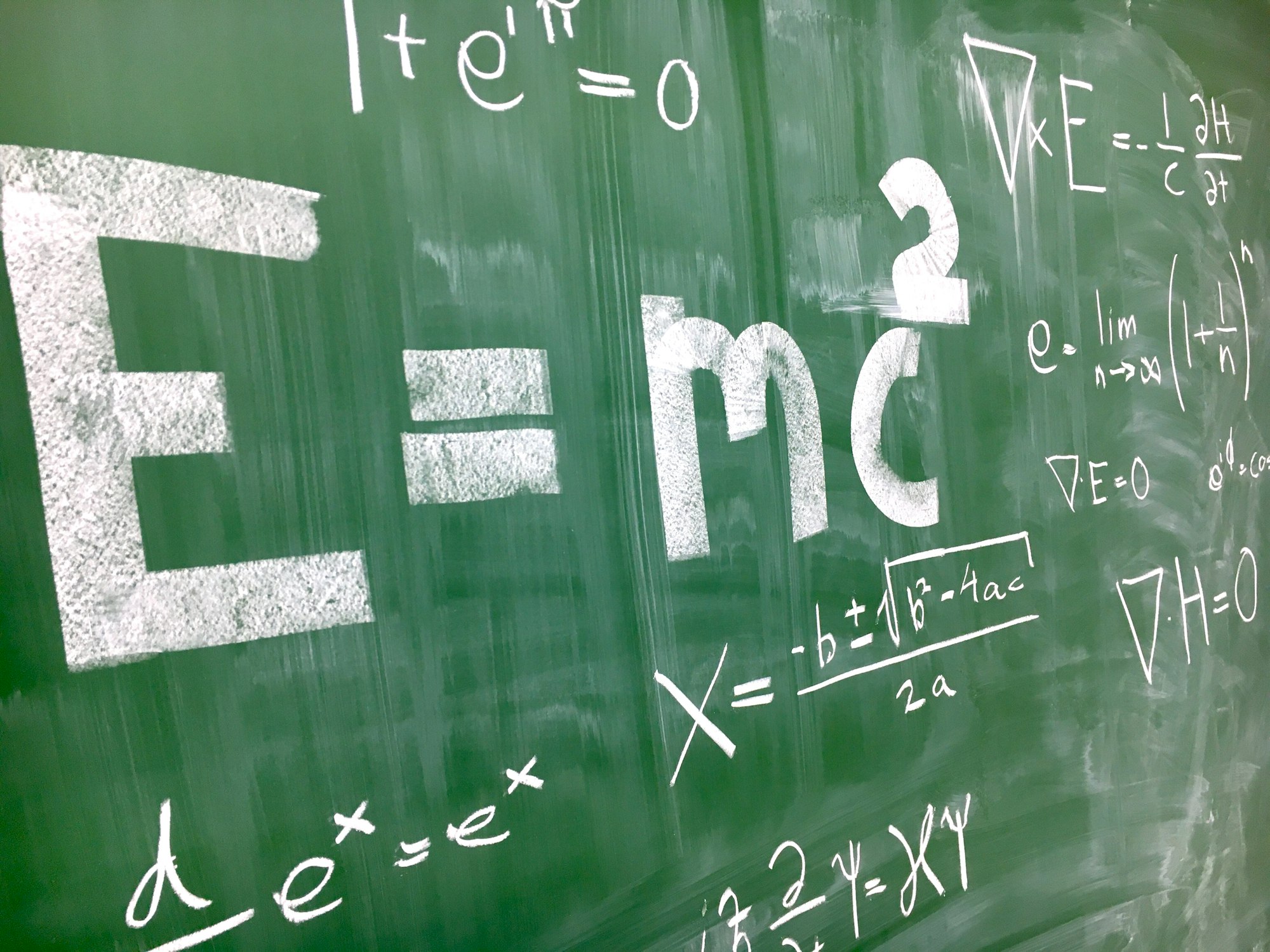


FAQs
1. How are HSC Physics Exam structured?
- Structure: The final exam runs for 3 hours plus 5 minutes reading time and is out of 100 marks.
- Section I: 20 multiple-choice questions (1 mark each).
- Section II: Short answer and extended response questions, including data interpretation and graphing questions (worth 2-9 marks each).
2. How to Prepare for HSC Physics?
- Read the syllabus: Know the required theory and outcomes.
- Learn concepts in depth: Understand and apply core ideas, not just memorize equations.
- Do practice questions and simulate exams: Focus early on actual exam-style problems to test readiness and timing.
- Review past papers: Work through official NESA papers and mark schemes to see common question styles and required depth of answers.
- Ask Questions: If you have any doubts, clarify them immediately with teachers and/or tutors.


